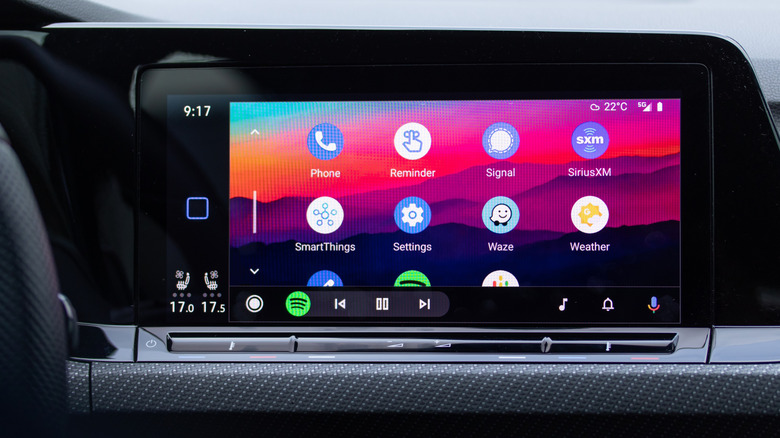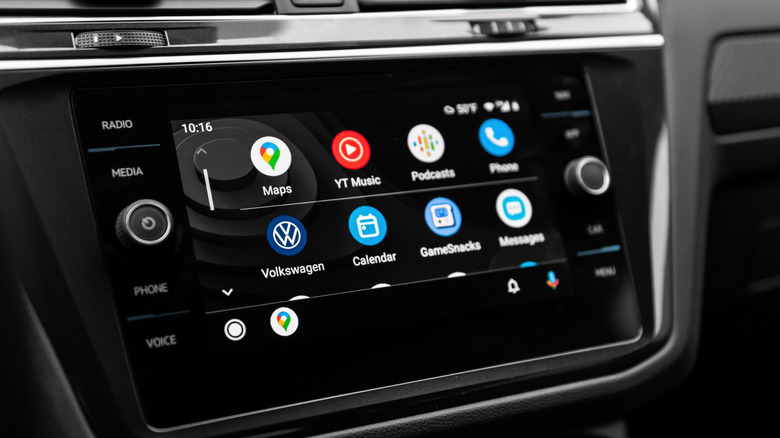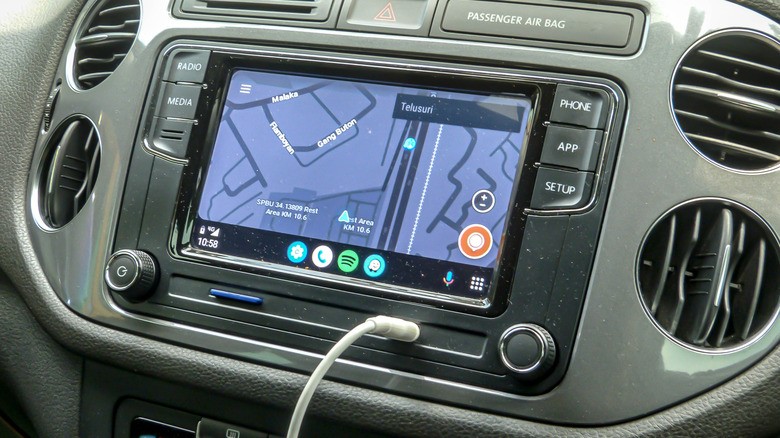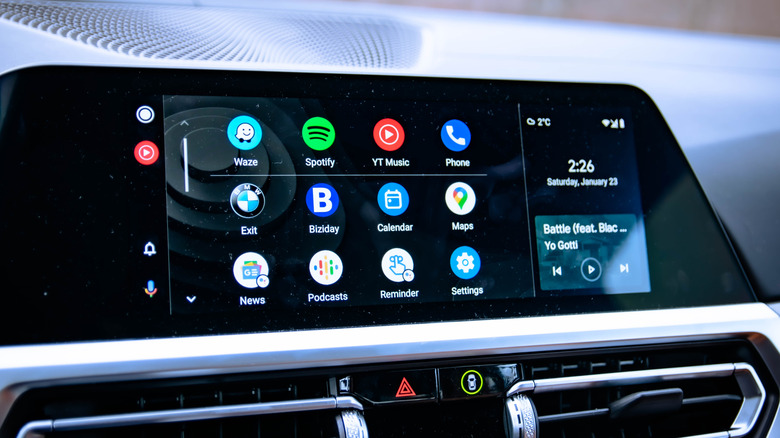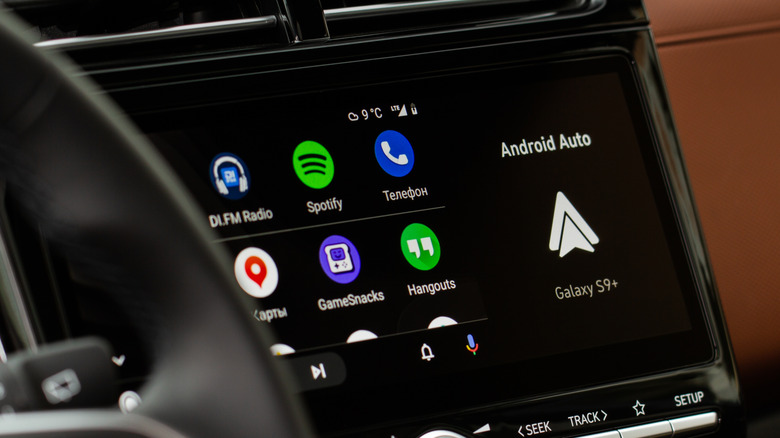4 Most Common Android Auto Problems (And How To Fix Them)
Android Auto, Google's answer to Apple CarPlay, can be great for expanding the capabilities of your vehicle by connecting an Android device to the infotainment system. It's great for accessing maps, music, and calls in a safe manner, and it has plenty of downright essential apps, making for a versatile, personal experience. Useful as it may be, and like most technology, it can have its share of issues.
When it comes to Android Auto problems, things like compatibility issues or trouble establishing a wired or wireless connection are common. Many of the difficulties you may experience can often be solved by changing certain settings, checking for updates, or restarting the vehicle and smartphone. Be sure to check if Android Auto is available in your country before moving forward with any solutions.
Remember that due to the wide variety of Android devices and infotainment systems, some steps may be approximations for your devices. There will be times when you will need to consult the user manual for your infotainment system, so do your best to have it nearby. With that in mind, check out some of the common Android Auto problems and their solutions below.
Compatibility issues
One of the first problems you may encounter is compatibility issues. It may be that your vehicle's infotainment system doesn't support Android Auto, or your smartphone doesn't meet the minimum requirements. Concerning your infotainment system, check Android's list of compatible vehicles to see if it makes the cut.
For wired connections, your phone must be running Android 9.0 or higher and have an active data plan. For wireless connections, you can use any device running Android 11.0 or later, a Samsung or Google phone running Android 10.0 or later, or a Samsung Galaxy S8, Note 8, or Galaxy S8+ running Android 9.0 or later. The smartphone must also have 5 GHz Wi-Fi support, which Google recommends checking with your manufacturer for compliance.
To meet the software requirements of Android Auto, you can check your phone for an update. Since updates can also bring about new bug patches and even security features, checking regularly can be a good idea. Here are the steps to check for an Android update:
-
Open Settings.
-
Select System.
-
Tap Software updates.
-
Follow the instructions on the screen.
If your infotainment system is incompatible, consult your user manual to see if there is a way to check for a software update. You should also check the Google Play Store for an Android Auto update for your phone. If all else fails and you have an Android tablet, there is a way to transform it into an Android Auto head unit.
Wired connection problems
A wired connection misbehaving can be a fairly common problem. In theory, so long as the smartphone and infotainment system are compatible, making the connection is just a matter of connecting the cable from your phone to your vehicle. However, if you are experiencing issues, your first step is to unplug the phone and plug it back in, as well as turn your vehicle on and off. You can also try restarting your Android device.
For cables, remember that Google recommends one that's less than 3 feet in length, and also encourages using the cable that came with your phone. Check to see if the cable works with other devices, or use Android Auto's USB startup diagnostics tool to check if your cable is compatible. Simply navigate to Settings in Android Auto, select Connection help, and then choose USB startup diagnostic.
If all else fails, you may need to uninstall and reinstall Android Auto updates. Here are the steps:
-
Navigate to the Google Play Store from your phone.
-
Search for and locate Android Auto and select it.
-
Tap Uninstall and confirm.
-
Once the process is complete, tap Update and try using it again.
It may also be that the right settings are not enabled. With the phone plugged into your vehicle, open your device's notification drawer, select USB settings, and choose Data transfer/Android Auto. This should help if your device only charges while connected to the system.
Issues with wireless connections
Going wireless is a little more involved, and you are more likely to find yourself having issues establishing a connection compared to a wired connection. One recommendation is to try making a wired connection first. Connect your smartphone to the vehicle via USB, make the connection to Android Auto, and then turn off your vehicle. Disconnect the cable and then turn the vehicle back on to see if Android Auto wirelessly connects. You can also try removing and updating the Android Auto app by following the steps found in the wired issues section.
There's also the option of removing a vehicle from Android Auto and reconnecting it. Here's how to forget a vehicle in Android Auto:
-
Open Settings on your smartphone.
-
Tap Connected devices,
-
Select Connection preferences.
-
Tap Android Auto.
-
Choose Previously connected cars.
-
Select your car from the list.
-
Tap Forget.
-
You can also tap the three dots in the top right and then choose Forget all cars.
If you're using a wireless adaptor, you'll want to make sure that it is functioning as it should. Like resetting your vehicle or smartphone, unplug the adaptor from your vehicle and plug it back in. It's also a good idea to consult the manual for the adaptor to see if it potentially needs a firmware update.
Other things to check for connection issues
Given the variety of infotainment systems available in the vehicle market, there may be smaller connection issues at play that are still relatively common. For folks who recently acquired a new device, you may experience issues if you used an app that helps with transferring data, such as the handy Android Switch feature.
While uninstalling and reinstalling the Android Auto app as listed above may help, you may also want to clear Android Auto's cache and storage. Clearing the cache in Android Auto can be just as important as clearing it on your Android phone. Here's what to do:
-
Open Settings on your phone.
-
Select Apps.
-
Choose See all apps.
-
Locate and choose Android Auto. It may be labeled com.google.android.projection.gearhead.
-
Tap Storage & cache.
-
Select Clear storage.
-
Select Clear cache.
It's also a good idea to check your device's Android Auto settings to ensure everything is set correctly. Here's how to check:
-
Open Settings on your phone.
-
Select Connected devices.
-
Tap Connection preferences.
-
Select Android Auto.
-
Tap Start Android automatically and ensure it's set to Always.
-
Make sure Start Android Auto while locked is set to On.
-
If using a wireless connection, ensure Wireless Android Auto is enabled. Disable it if using a wired connection.
-
Select Previously connected cars from the top of the settings, and make sure your vehicle is not in the Rejected cars list.
